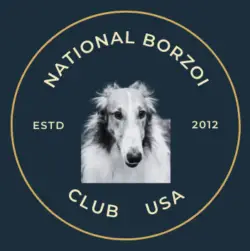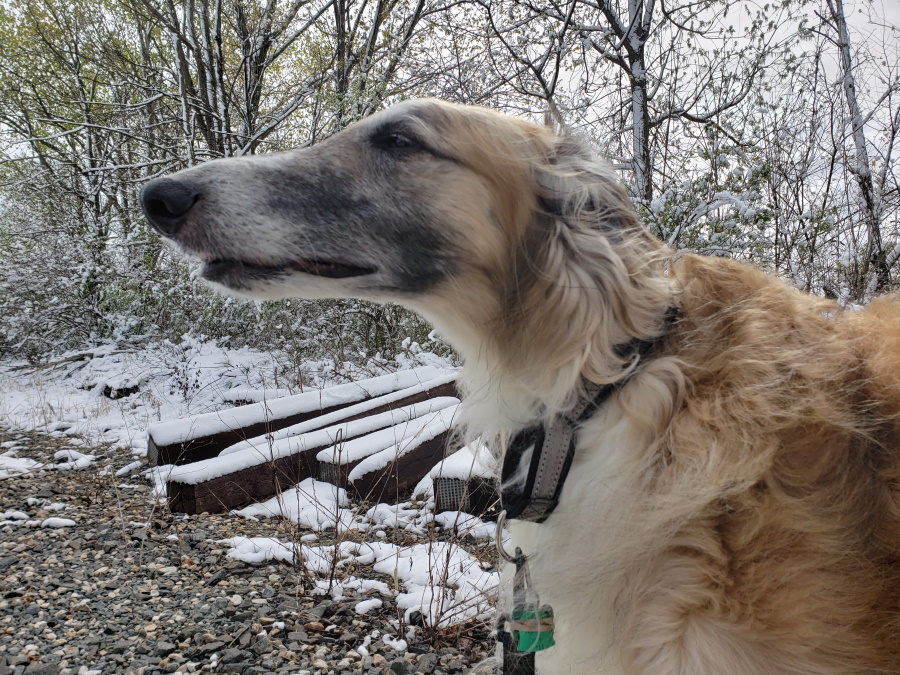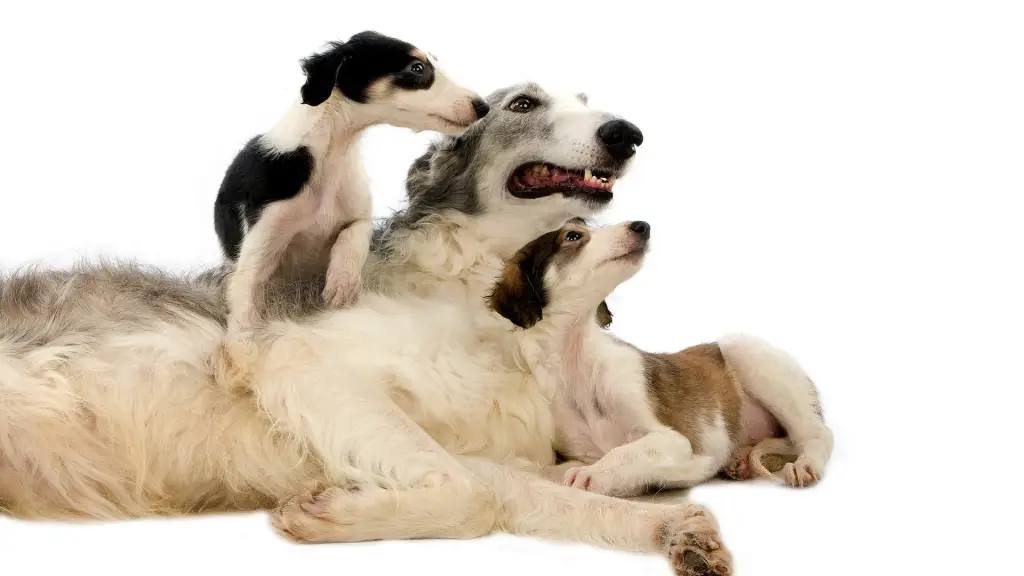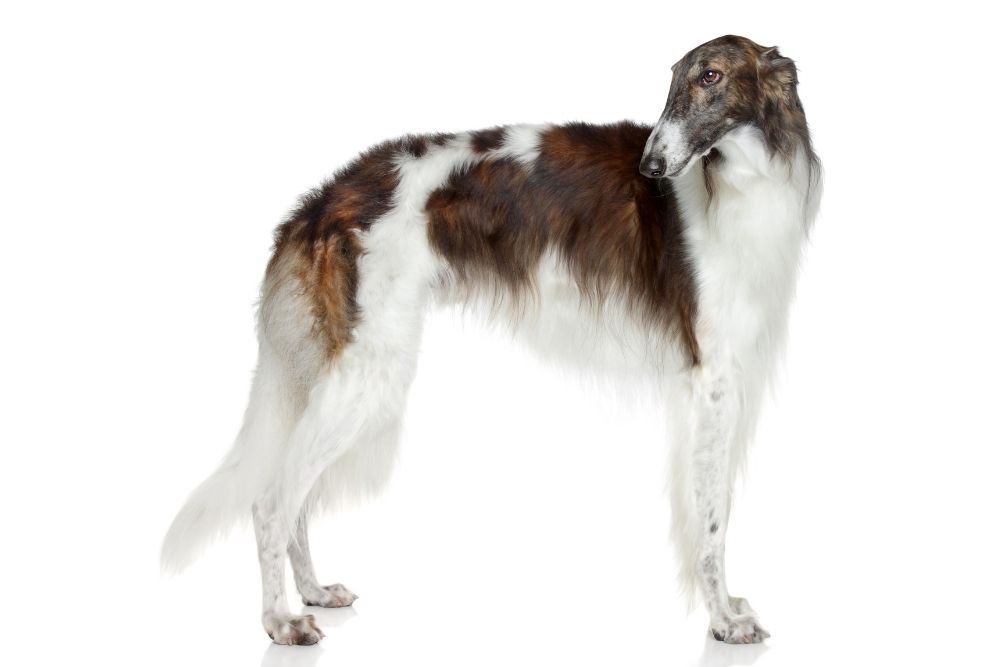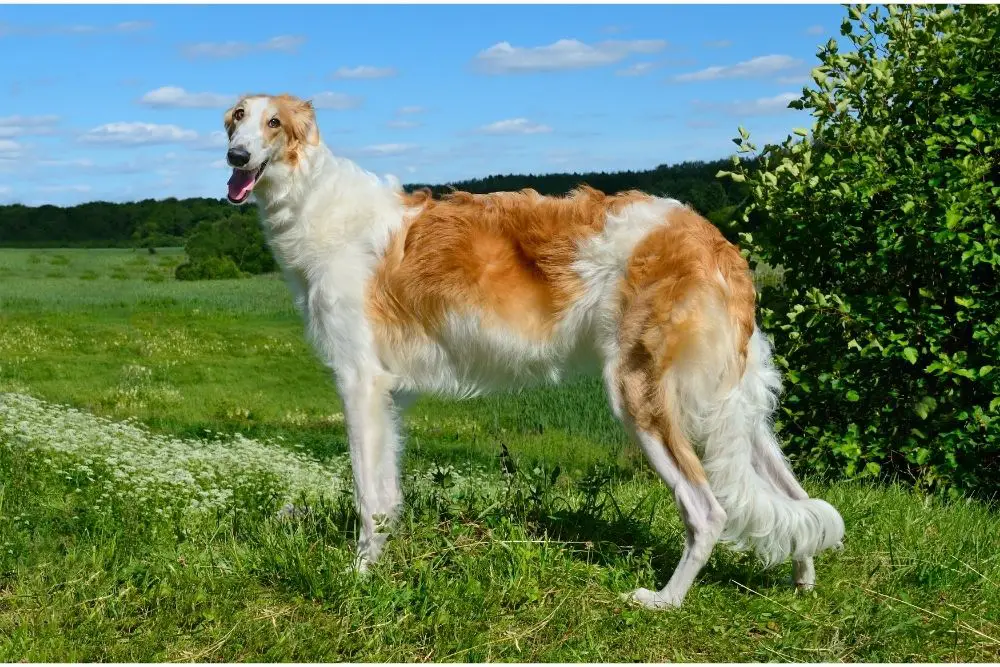Borzoi collars can be difficult to find for so many reasons. The first and most obvious is their head shape, which makes slipping out of a regular collar easy. Borzois also have sensitive necks, high prey drives, and a tendency to roam.
The best collars for a Borzoi include:
- Fishtail collars that are thick in the middle with thin edges. They are also called Tapered Collars. They distribute weight throughout the neck and are difficult to slip out of.
- Martingale collars that tighten to the size of the neck when pulled. These tighten to the size of your Borzoi’s neck to stay on, but no tighter. When properly fitted, they won’t hurt or choke your dog.
- Head collars that attach to your Borzoi’s muzzle. These better control strong pullers.
- Harnesses that distribute weight to prevent injuries when pulling and are difficult to slip out of.
In this article, we’ll talk about why Borzois are difficult to find collars for, why it’s so important to contain your Borzoi, and the best collars for your dog to wear.
Table of contents
Triangular Heads: Why it’s Difficult to Collar a Borzoi
Borzois have narrow skulls and long, slender snouts. Their heads are triangularly-shaped, and the widest points align with their necks—making it easy for a collar to slip right off.
These dogs also have long, slender necks that can injure more easily than other breeds.
A regular dog collar isn’t suitable for a Borzoi. Thick collars are best for evenly distributing weight so that a pulling Borzoi won’t be hurt. These collars are typically thick in the middle, narrowing at the sides where the collar buckles.
Other options are Martingale collars, harnesses, and head collars.
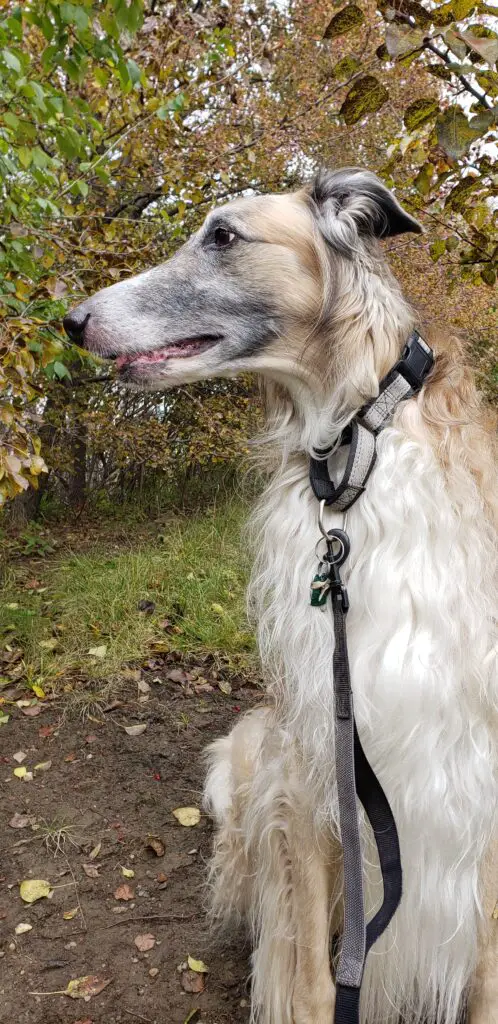
Types of Collars in Pictures
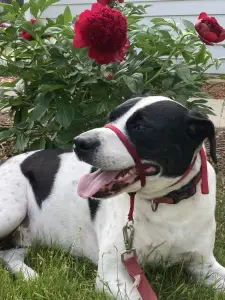
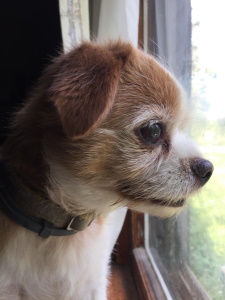
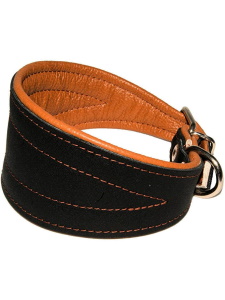
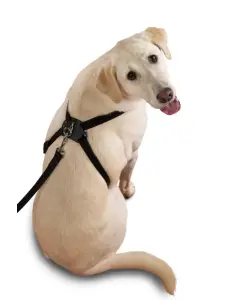
Keeping Borzois (and their Prey Drive) Contained
Borzois have an extremely high prey drive. Don’t let them fool you while they’re lazing on your couch—they were built to sprint, and they can run up to 40 miles per hour!
Once these dogs are gone, it’ll be difficult to retrieve them. They also aren’t thinking much when they’re on the chase—which can lead to them running into traffic or other dangerous situations.
Borzois are well-known for sprinting after things that aren’t prey at all—from the neighbor’s cat to a plastic bag rolling down the street.
Don’t think you can train this out of them, either. Even a well-trained dog will often act out their instincts rather than obey commands, and recall training is almost always unreliable.
Instead, your Borzoi should always be securely leashed or enclosed with a tall, durable fence. Their lithe bodies can easily jump hurdles.
What to Look for in a Borzoi Collar
1. Keeps your Borzoi Contained
The most important aspect of a Borzoi collar is that it stays on your dog! They should not be able to slip backward out of it, paw it off, or otherwise escape your hold when you’re on a walk.
As a giant breed, Borzois are quite strong—so another thing to think about is whether the collar allows you to control them properly once it’s on. Fishtail collars and harnesses allow your Borzoi to pull using their entire body weight, while Martingale and head collars give them less control.
2. Fits Properly
Next, the collar needs to fit properly. You’ll find that many collars are too small for your Borzoi, while others may fit too loosely.
The collar should show measurements and also have instructions for adjusting it to fit your dog’s neck. You don’t want too tight of a fit, especially with a Martingale, as this can hurt or choke your Borzoi.
If the collar is too loose, they will slip out easily and you won’t be able to keep them on leash.
A veterinarian or dog trainer can help you to fit the collar properly if you have doubts.
3. Durable and Made to Last
The ideal collar is durable, with a strong buckle and material that won’t rip when your Borzoi tugs on the leash. Well-made collars are especially crucial for Borzoi since they weigh a lot, might be strong pullers, and have a tendency to roam.
4. Comfortable for your Dog to Wear
The collar should never be uncomfortable for your dog to wear, especially if they’re wearing it their whole lives! Look for collars with padding, soft material, and that fit your Borzoi right.
Training is crucial to ensure your Borzoi is comfortable with their collar, especially if you use a head collar or harness that they only wear on walks.
5. Fits your Desired Use
Head collars and harnesses aren’t meant to be worn around the clock but instead are made for walk time only.
It’s recommended that you also have a neck collar of some sort if you’re using one of these options. This allows you to attach identification tags and a dog license to your Borzoi—the latter of which is required by law in most states.
Neck collars can be worn every day, even when you aren’t walking your dog.
All collars and harnesses should be removed when your dog is crated, as they pose a huge hazard if they get caught on the crate. They may be injured or even choked.
6. Do not use Aversive Collars
Aversive collars include shock collars, choke chains, prong or pinch collars, bark collars, and anything else that serves to punish or hurt a dog.
Using physical force to get your dog to behave is abuse. It also doesn’t work!
Many people still believe you must be dominant to gain a dog’s respect. However, the dominance theory of dog training has long been debunked.
It was based on a faulty wolf study done on captive, stressed wolves who didn’t have enough resources.
In the wild, wolves actually live in family units. The parents lead the group, but it’s not because of a dominance hierarchy. Wolves don’t kill off the alpha or show aggression to gain control of a pack—this is simply another related myth.
Dogs are a domesticated species, and they’ve been bred for our convenience. They want to please us, and it’s our job to show them how—99% of the time it’s poor training, not a dog’s faults, that results in misbehavior.
Your dog isn’t trying to make you angry or sass you—they simply don’t know what you expect! Punishments and the dominance theory of dog training worsen this problem because they simply teach your dog what not to do without telling them what they should be doing.
Positive reinforcement training redirects your dog to positive behaviors. It promotes respect from your dog by first respecting them, their instincts, and their needs.
Four Best Collar Types for Borzois
Fishtail
Fishtail collars are much thicker than regular collars. They are also known as Tapered Collars. They thin out toward the buckles.
This design distributes pressure throughout your Borzoi’s neck, makes it more comfortable for them to wear, and prevents injury. These collars are also more difficult to slip out of.
Leather Fishtail Tapered Borzoi Collar
Check Price on Amazon
Martingale
Martingale collars are another type of collar that is especially great for sighthounds. These collars look a little bit like a large collar with a smaller collar in the center.
The “smaller collar” is attached to the base of the collar with metal rings. It also has another ring to attach a leash to.
When your Borzoi pulls on their leash or tries to slip out of it, the collar tightens only enough to stay on their neck. It should never hurt or choke them—it’s important to make sure it’s properly fit to avoid this.
Martingale Collar
Check Price on Amazon
Head Collars
Head collars loop around your Borzoi’s neck behind the ears, and over their muzzle. The leash is attached at the bottom of the muzzle.
This kind of collar is suited for strong pullers, as it doesn’t allow your Borzoi to pull you using their whole body weight.
Head collars are typically harder for your Borzoi to adjust to than neck collars, so they take more training effort. You don’t want to force your Borzoi to wear any collar. Instead, tempt them forward with treats and let them move at their own pace.
Once they’re okay with wearing it, leave the head collar on for short periods of time at home. Slowly build up until your Borzoi is unbothered, then begin using it during your walks!
Gentle Leader Head Collar
Check Price on Amazon
Harnesses
A harness is a collar alternative that supports your dog’s entire body. Harnesses are good for preventing neck injuries from a dog straining against their leash and are more difficult to slip out of than collars.
However, they also allow your Borzoi to pull with their entire bodies—something you don’t always want for strong breeds.
They also tend to take some training time, much like head collars. You’ll need to teach your Borzoi to accept the harness, and some dogs can be quite stubborn about wearing them at first.
Use treats, praise, and positive reinforcement. Allow your Borzoi to get used to the harness at their own pace and have patience!
Summary
Because of a borzoi’s unique head shape and long neck, a standard collar just won’t work. Instead choose a borzoi collar that is made specifically for your slender-necked, easily distracted, ready to run, speedy sighthound.
Last update on 2024-04-07 / Affiliate links / Images from Amazon Product Advertising API
